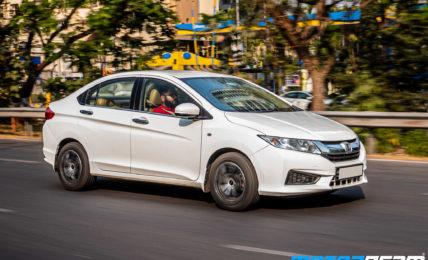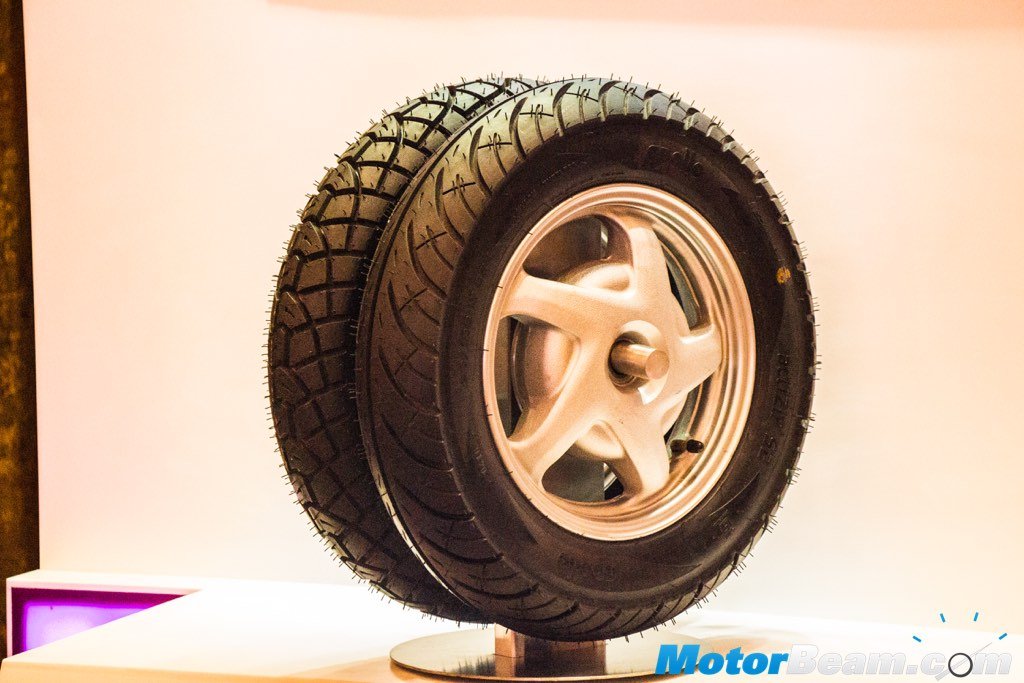The increase in grip is very significant over the stock tyres
We were positively surprised by the grip offered by the tyres on wet surfaces
Wet weather performance had us impressed too. With additional surface area of contact, the Apollo tyres offered good grip on wet surfaces. Even in standing water, the tread design dissipates most of the water reducing the chances of aquaplaning. The Swift loves to be pushed around corners and tyres play a crucial role when it comes to dynamics. While the steering is very feedback rich, the Apollo tyres offer good grip when pushing it around the twisties. However, they do tend to understeer on hard cornering. This is a much better situation to be in as the stock tyres would run out of grip rather quickly.
There is a very small drop in fuel efficiency
In India, fuel efficiency is a greater concern than safety and it is no surprise why there are only a handful of people who consider upgrading tyres. Especially in the mass market segment, most cars come with narrow section tyres, which also improve fuel efficiency of the vehicle as a narrower contact patch means less friction and greater fuel economy. With these new Apollo tyres, fuel economy dropped by close to 0.5 km/l which was not too much a price to pay for improved grip.
The Alnac 4G tyres feel noisy at high speeds
Ride quality has been average with the stock tyres and we did see some positives in this department after changing over to the Apollos. The Alnac 4G tyres absorb undulations far better and the difference is immediately obvious. However, one downside of these tyres was that at high speeds, there was considerable tyre noise. After using these tyres for over 30,000 kms, they have worn out by close to 50%, which means there is still enough juice for another 20,000 kms at least. This is quite good considering our road conditions take a toll on the tyres.
Regular alignment and balancing ensures better tyre life
The Apollo Alnac 4G tyres are a very good upgrade option for mass-market cars
Tyre life will depend on your driving style. A more relaxed driving style will lead to tyres lasting long while driving style which involves sudden braking and acceleration will be detrimental to long tyre life. Routine wheel alignment and balancing will reduce the chances of uneven wear, thereby increasing the longevity of the tyres. Chance of punctures are always there on Indian roads. To reduce your chances of picking up a puncture, avoid driving on the extreme end on the first and last lane, this is usually where the dirt and sharp shards accumulate. We have been religiously getting wheel alignment and balancing done every 5000 kms.
Our experience with the Alnac 4G tyres has been very positive
The Apollo Alnac 4G series of tyres have lived up to our expectations and have performed well in varied conditions. We felt the wet weather performance was particularly good and deserved a special mention. Each tyre costs roughly Rs. 4500/- and this is not a heavy price to pay considering these tyres bring tons of grip and safety in the equation. The Alnac 4G tyres are a suitable upgrade for most hatchbacks and mid-size sedans in our market. If you are planning to upgrade your tyres, always try and go with the original manufacturer specifications to get the best out of the new shoes for your car.
Our test tyres will still run for at least 20,000 kms more!




